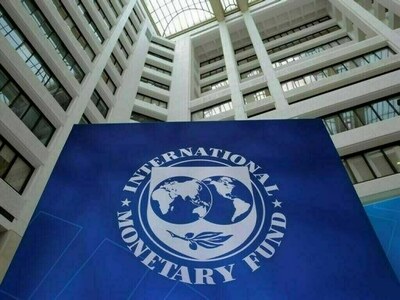IMF Slashes Global Growth Forecast Due to US Tariffs
The International Monetary Fund (IMF) has significantly lowered its projection for global economic expansion this year, attributing the downturn to the effects of tariff policies initiated by the U.S.
The IMF’s revised outlook anticipates a 2.8 percent global growth rate for the current year. This figure is a 0.5 percentage point decrease from the previous World Economic Outlook (WEO) forecast released in January. These projections include some, but not all, of the tariff measures implemented this year.
Looking ahead, the IMF projects global growth to reach 3.0 percent in the subsequent year, which is 0.3 percentage points lower than the January estimate.
According to IMF chief economist Pierre-Olivier Gourinchas, the global economy is entering a period of significant change. He highlighted that the risks to the global economy have intensified, with the recent U.S. tariff announcements cutting the Fund’s outlook for global trade growth by more than half this year.
The WEO report was released during the World Bank and IMF Spring Meetings in Washington, D.C., where global financial leaders gathered at the headquarters of these institutions.
The IMF established an April 4 cutoff date for incorporating tariff measures, thus excluding the most recent increases in levies against China. The IMF noted that the full implementation of these policies could substantially impede global growth.
The IMF’s forecast for U.S. growth was reduced to 1.8 percent this year, a 0.9 percentage point drop from the January projection. The U.S. economy is expected to decelerate further to 1.7 percent in 2026.
The IMF cited increased policy uncertainty, trade tensions, and weakened demand momentum as reasons for the slowdown. Gourinchas pointed out that tariffs would impact countries differently, creating a supply shock in the U.S. that lowers productivity and raises prices.
The Fund has adjusted its inflation forecast for the U.S. to 3.0 percent this year and 2.5 percent the following year.
Globally, the IMF anticipates that tariffs will lead to higher consumer prices, increasing its outlook for world consumer prices to 4.3 percent for 2025 and 3.6 percent in 2026.
Major U.S. trading partners, including Mexico, Canada, and China, are projected to experience negative effects from the U.S. tariffs. China’s growth is expected to fall to 4.0 percent this year, down from 5.0 percent in 2024. Mexico’s economy is forecast to contract by 0.3 percent this year, a 1.7 percentage-point decrease from January, and Canada’s growth outlook has been significantly reduced. Japan’s growth is projected at only 0.6 percent for this year and next.
The IMF anticipates that tariffs will hinder growth in most European countries, with the growth outlook for the euro area reduced to 0.8 percent in 2025 and 1.2 percent the following year.
Germany is now expected to experience no growth this year, and the outlooks for France, Britain, and Italy have also been lowered.
The IMF has greatly lowered the outlook for the Middle East but still anticipates increased economic activity from 2024, as disturbances to oil production and shipping diminish.
In sub-Saharan Africa, growth is projected to decrease slightly to 3.8 percent this year before improving next year. Gourinchas has encouraged countries to negotiate and reach an agreement.



Comments (0)
No comments yet. Be the first to comment!
Leave a Comment